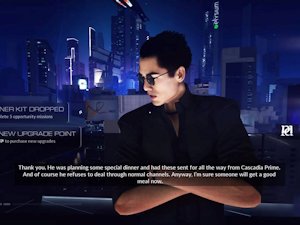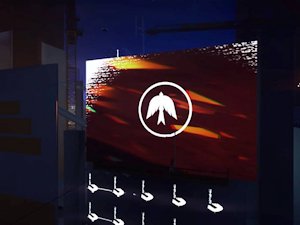Mirror's Edge Catalyst
It's been almost eight years since Electronic Arts released one of the most groundbreaking games of the last console generation, Mirror's Edge. A first person game that emphasized freerunning over gunplay (back when parkour was all the rage), the game was remarkable as an idea, but a bit lacking in polish. It was a concept that demanded to be expanded upon in a follow-up, and over the years, developer EA DICE continued to stress that one was coming that would improve upon the original in every way. In 2010, this humble writer even offered a brief description of what that game could be like, arguing that the only move that made sense was turning the franchise loose on an open world. It is now 2016, and EA DICE has finally come out with Mirror's Edge Catalyst, an open-world reboot/prequel to 2008's parkour-heavy experience. Unfortunately, despite eight long years of development, Mirror's Edge Catalyst manages to recapture one of the original game's primary flaws: it feels like a game loaded with unrealized potential.
STORY
 | | I seriously hate this woman lecturing Faith |
As in the original game, you play as Faith, a young rebel who uses her freerunning skills to combat an oppressive corporate dystopia, called Glass, full of private security forces, political dissidents, and strangely convenient architecture. This game picks up even earlier in her life story, though it doesn't seem to adhere to the loose continuity of the original game in any meaningful way. Faith has just been released from juvie and is thrown right back into the world of runners and their peaceful crusade. Immediately after her release, though, she uncovers secrets that cause the city's largest security force to bring the hammer down on the runners, threatening the reluctant cease-fire both sides had agreed to and giving an excuse for a borderline-terrorist underground to rise up.
It's not a terribly deep tale, though it earnestly tries to be more meaningful and interesting than the loose plot of its predecessor. Alas, by filling the story with deeply unlikeable characters and predictably quirky archetypes, it actually feels less memorable on the whole than the barely recollectable plot involving a framed sister and a new force of runners-fighting-runners that defined the first Mirror's Edge. The one vast improvement it deserves credit for is in Faith herself, who feels more like a genuine character this time around, struggling to make sense of her family's past and her own future in the rebellion.
|
[Story: 6 - Faith is a more fleshed out character, but she is surrounded by terrible archetypes and a cliché dystopia tale that has nothing interesting to offer on its own]
|
|
GAMEPLAY
 | | So I'm delivering these perishables to you on a brutal time limit so you can... deliver them to someone else? |
The freerunning gameplay that was so amazing back in 2008 is back and better than ever. The controls are roughly the same, but they feel even more responsive and intuitive, with some neat new additions on top. It's much easier to get into a steady flow and rhythm, and though missteps and the occasional bad response do happen, they are minimal at worst. There are new zip-line features and a disruptor tool that are all quite handy, and combat is vastly improved to focus on fluidity and constant movement rather than just fists and guns. Faith can't use guns at all this time--which is neatly explained plotwise by weapons being biometrically encoded to their users--but Faith is so much more agile and capable than most of her opponents that you wouldn't want to slow down to use guns, even if you could.
Making the game an open world that is mostly non-linear in structure means that finding paths quickly is especially critical, and though you can eventually get to a point where you can traverse the rooftops of Glass on instinct alone, the game wisely gives you an improved "runner vision" that includes a red trail to help guide you to your chosen destination. It doesn't give you the fastest route, which helps build the sense of exploration and thrill of discovery when you find shortcuts and hidden paths, but it works relatively well, all things considered. The one major downside is that there's no indicator for when you need to turn around, so if you're running the wrong way, you won't know it immediately. This can be maddening in the heat of a critical, difficult run.
The side missions are all pretty similar to the point of getting bland. You run from Point A to Point B in order to deliver something, to distract guards, or to collect things, often with a punishingly difficult time limit. A handful of racing runs will award you on a three star system based on how quick you are, but the vast majority of missions work on a pass/fail system. Trust me; no matter how good you think you are, you will fail a lot more than you will pass. A big part of the problem is the upgrade system, which eventually makes the running a bit faster by improving your climbing speed and such, but early in the game, you may not realize that the mission you've been busting your ass to complete for the last hour and getting increasingly frustrated by is simply impossible, because you haven't gotten the appropriate upgrade.
 | | Hacking a billboard is great and all, but why put your support behind the Mockingjay like that? |
An open world game like this needs an upgrade system--I get that--but it is poorly balanced here. The start of the game needlessly holds you back, denying you many skills you had throughout the original Mirror's Edge, like double wall jumping or lifting your feet mid-jump to avoid obstacles. The combat upgrades are good and work well, but the others feel too much like deliberate handicaps, and not having those upgrades makes the first several hours of the game much harder than the rest of it, an unforgiveable lack of balance.
The frustration will also highlight one of the biggest problems with the delivery missions: the pointless time limit. Why do I only have an oddly specific thirty-seven seconds to deliver these quail eggs to that guy ten buildings over? Why, if I get within five feet of the recepient, who is looking right at me when the timer hits zero, do I still fail the delivery? And why am I doing this anyway? Why can't people just deliver their own damn quail eggs? As with any other open world game, there are also a wealth of collectables to find and a few minor tasks to accomplish (such as hacking billboards, a personal favorite), but the rewards for them are paltry at best. Why waste your time getting GridLeaks (whatever they are) for ten XP a pop when you can just have some guards chase you to a safehouse and get thirty or forty times as much XP?
So it is that Mirror's Edge Catalyst finally delivers on the promise of the original in terms of parkour gameplay, refined combat, and true freedom of movement, but at the same time still manages to feel like a game that hasn't met its own potential. Going open world is definitely the right call, but it almost feels like the game designers didn't know how to fill it with diverse activities or proper rewards.
|
[Gameplay: 7 - The first person freerunning is refined to an artform, but the open world is severely lacking and tedious]
|
|
-e. magill 6/22/2016
|
|